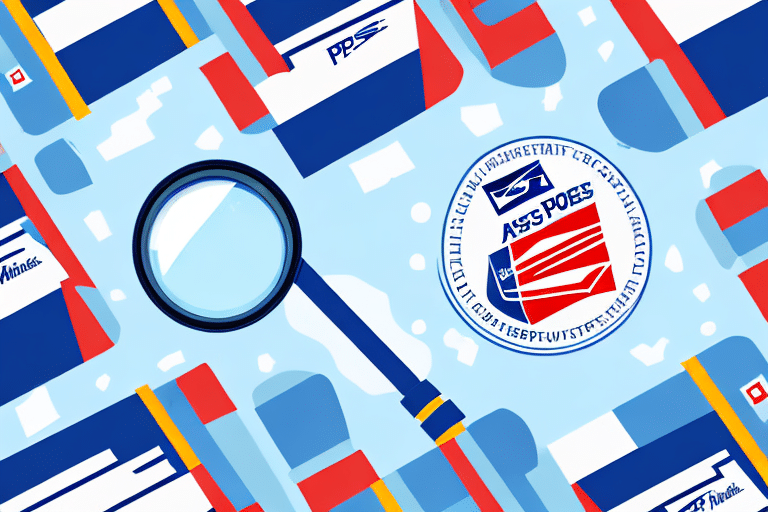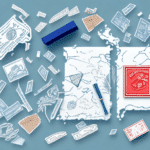Understanding the Cost of USPS Extra Insurance
Are you shipping something valuable through the United States Postal Service (USPS)? If yes, then you might want to consider purchasing extra insurance to protect your package in case of loss or damage. While USPS offers some level of liability coverage for most shipments, it might not be enough to cover the full value of your item. This article will help you understand the cost of USPS extra insurance and how to make the most of it.
Why Extra Insurance is Essential for Your USPS Package
Shipping valuable items requires more than just reliable delivery services. Here’s why extra insurance can be crucial:
Protection Against Loss or Damage
Accidents can happen during transit or delivery, potentially leading to lost or damaged packages. Extra insurance provides financial protection against such incidents.
High-Value and Fragile Items
Items like jewelry, electronics, or collectibles are not only valuable but also often irreplaceable. Ensuring these items are fully covered is essential.
International Shipping Risks
International shipments face additional risks such as customs inspections, delays, and higher chances of theft. Extra insurance helps in recovering the package's value in these scenarios.
Factors Influencing the Cost of USPS Extra Insurance
The cost of USPS extra insurance varies based on several factors:
Declared Value of the Package
The higher the declared value, the more expensive the insurance will be. This value represents the maximum amount USPS will pay in case of loss or damage.
Shipping Distance and Destination
Shipping to remote areas or internationally can increase insurance costs due to the higher risk involved.
Shipping Method
Different shipping methods, such as Priority Mail or Express Mail, come with varying insurance rates.
Type of Item Shipped
Fragile or high-risk items like electronics may require additional coverage, influencing the overall cost.
Determining the Value of Your Package for Insurance
Accurately declaring the value of your package is crucial for appropriate insurance coverage:
- Original Purchase Receipt: Use the purchase receipt or invoice to determine the item's worth.
- Market Value: Research current market values to ensure accurate declaration.
- Professional Appraisal: For antiques or unique items, consider getting a professional appraisal.
Remember, while you can declare a sentimental value, USPS insurance only covers the actual market value of the item.
Saving Money on USPS Extra Insurance
Insurance can add to your shipping costs, but there are ways to minimize expenses:
- Proper Packaging: Pack and label your shipment correctly to reduce the risk of damage or loss.
- Use USPS Priority Mail: This service includes up to $50 of insurance at no extra cost and offers faster delivery.
- Ship During Off-Peak Seasons: Avoid surcharges by choosing less busy times for shipping.
- Explore Alternative Carriers: Compare insurance prices with other shipping carriers to find better deals.
Another strategy is self-insuring your package by setting aside funds to cover potential losses instead of purchasing extra insurance.
Filing Claims with USPS Extra Insurance
Types of Claims
- Lost Packages: If USPS cannot locate your package, file a claim for its declared value.
- Partial Loss: For partially lost or damaged packages, claim compensation for the affected portion.
- Complete Loss: In cases of total loss or damage, file a claim for the entire declared value.
Claim Filing Process
- Retain all packaging and damaged items as received.
- Complete the insurance claim form available on the USPS website or at your local post office.
- Attach necessary documents like the original invoice, photos of the damaged item, and a copy of the shipping label.
- Submit the completed form and documents to USPS.
Note that USPS has specific time limits for filing claims: within 60 days for domestic shipments and within 6 months for international ones. Claims may require an inspection of the damaged item before approval.
Common Mistakes to Avoid When Purchasing USPS Extra Insurance
- Underdeclaring Package Value: Ensure you declare the accurate value to receive proper compensation if needed.
- Overpaying for Insurance: Only purchase the coverage you need to avoid unnecessary expenses.
- Ignoring Policy Terms: Always review the insurance policy’s terms and conditions to understand coverage and exclusions.
- Poor Packaging: Inadequate packaging can lead to damage and complicate claims.
Choosing the Right Amount of USPS Extra Insurance
Selecting the appropriate insurance amount involves considering various factors:
- Coverage Limits: Ensure the insurance covers the full declared value of your package.
- Shipping Method and Distance: Higher risks associated with certain methods or longer distances may necessitate more coverage.
- Avoid Over-Insurance: While it’s important to be adequately covered, purchasing more insurance than necessary can be costly.
Comparing USPS Extra Insurance with Other Shipping Services
Before committing to USPS extra insurance, compare it with offerings from other carriers to ensure you’re getting the best value:
Alternative Shipping Carriers
Private carriers like FedEx or UPS may offer different insurance rates and coverage options that could better suit your needs.
Insurance Benefits
Consider factors like coverage limits, claim processes, and additional benefits when comparing insurance options across carriers.
For a detailed comparison, visit the USPS International Shipping page or consult third-party shipping comparison tools.
Alternative Shipping Options to Minimize Insurance Costs
If reducing insurance expenses is a priority, explore these alternative shipping methods:
- Private Shipping Carriers: Some carriers offer competitive insurance rates tailored to specific shipping needs.
- Courier Services: On-demand or same-day delivery services can reduce transit time, minimizing the risk of loss or damage.
- Package Tracking: Utilize shipping services that provide real-time tracking to monitor your package’s journey and address issues promptly.
Understanding the Limits and Exclusions of USPS Extra Insurance
While USPS extra insurance offers valuable protection, it's essential to be aware of its limitations:
- Excluded Items: Perishable goods, currency, illegal materials, and certain high-value items like firearms may not be covered.
- Value Restrictions: Specific categories, such as jewelry, may have lower coverage limits.
- Poor Packaging: Damages resulting from inadequate packaging are typically excluded from coverage.
Best Practices for Packaging and Labeling to Avoid Damage or Loss
Proper packaging and labeling are critical in preventing damage or loss during shipping:
- Use Sturdy Materials: Opt for robust boxes or envelopes that can withstand shipping conditions.
- Protective Padding: Incorporate bubble wrap, packing peanuts, or foam inserts to cushion the item.
- Secure Sealing: Use high-quality packing tape to seal all openings and seams firmly.
- Clear Labeling: Ensure shipping details are legible and accurate, including recipient and sender addresses and any handling instructions.
Conclusion
Understanding the cost and benefits of USPS extra insurance is vital for anyone shipping valuable items. By accurately declaring your package's value, choosing the right coverage, and following best practices for packaging and labeling, you can safeguard your shipments and minimize financial risks. Additionally, exploring alternative shipping options and being aware of insurance limits can help you make informed decisions that best suit your shipping needs.






















